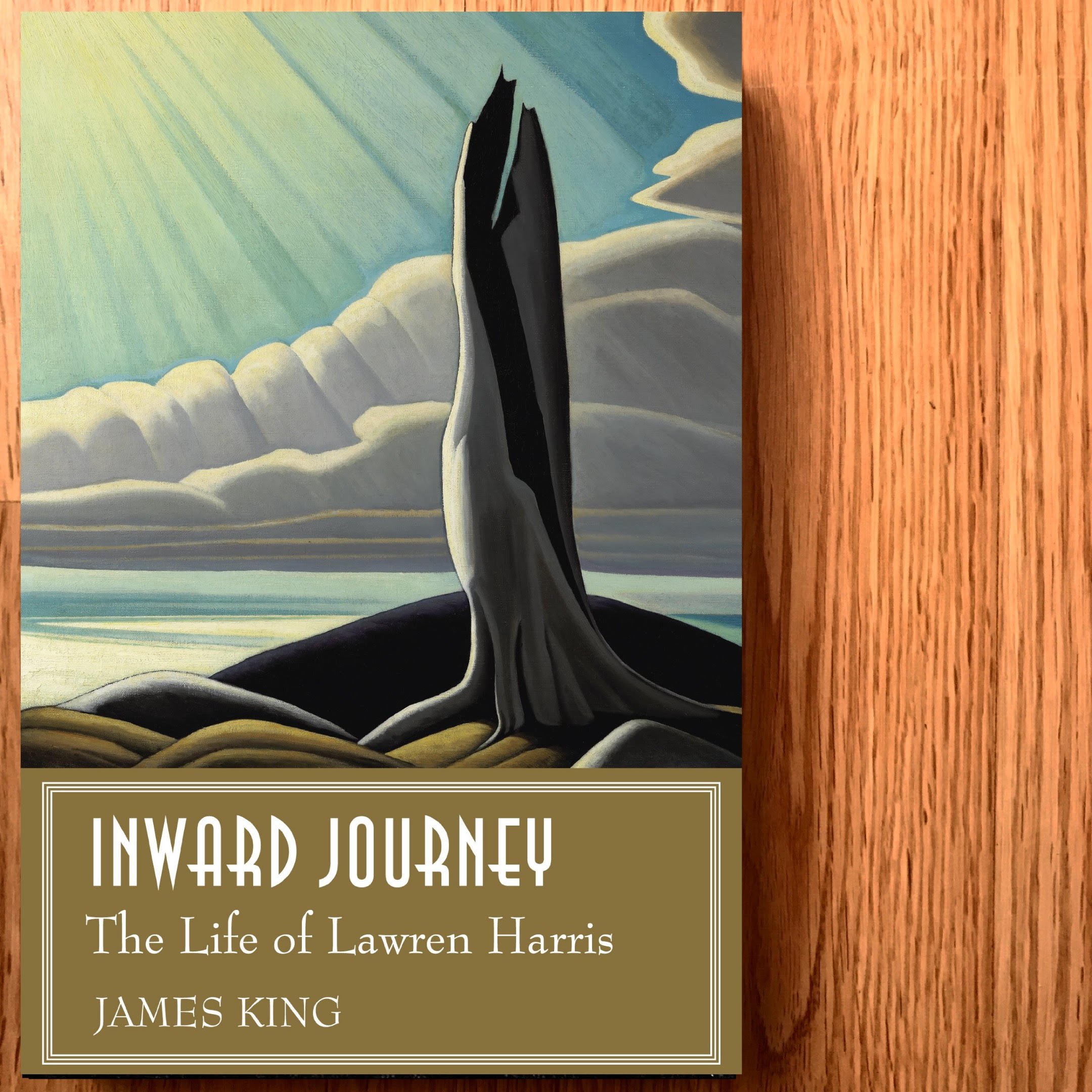By Caprice Hogg
To many, the name Lawren Harris brings visions of large paintings of snowcapped mountains and icebergs. In Inward Journey, James King gives an account of the professional and private life of Lawren Harris—a dedicated artist who not only focused his attention on his own work but also on the artists around him. He was instrumental in creating an entire art movement in Canada with a focus on portraying a truly Canadian landscape in art. It was Harris’ intellect, vision, and finances that built the Studio Building in downtown Toronto where the Group of Seven were established. These painters shared in Lawren’s artistic ideals. It is difficult to imagine the Group of Seven, or Canadian art in general, without the influence of Lawren Harris. This is his public persona.
The most fascinating part of this book was reading the personal details of Harris and seeing the photographs from his private life. James King gives us a glimpse into the life of the man behind the famous paintings. When you read about Harris painting in his studio while wearing a suit jacket and tie, surrounded by white furnishings and white carpet, with opera music playing so loudly the neighbours could hear, it somehow provides deeper meaning to his large oil canvases. King introduces us to a side of the artist that has rarely been seen.
It was shocking to read that Harris was shunned in 1934 by his hometown of Toronto when he chose to divorce his first wife and marry the love of his life, Bess Housser. Due to this scandalous behaviour, they were both exiled from the city and country to which he had dedicated so much of his life. They fled to the United States and eventually landed in Taos, New Mexico, which resulted in some of the most prolific and creative years in Harris’ life. His time spent there provided him with new insight into painting and spirituality that transformed his art. This move made a dramatic shift from his paintings of the Canadian landscapes of the north to abstracted paintings symbolizing higher consciousness. It was fascinating to see how life events unfolded in his private life took literal shape on his canvases.
When the war hit, Harris and his wife were forced to return to Canada. This time they chose the West Coast—Vancouver. He once again began a new art movement, establishing the Canadian Federation of Artists that is still in existence today. He continued to teach and mentor the younger artists that were around him, such as Jack Shadbolt and Gordon Smith.
I highly recommend this book to anyone who wishes to have a better understanding of one of Canada’s greatest painters. King’s vivid words paint a portrait of one of Canada’s most revered artists. Harris’ art and ideals have left an incredible legacy for generations of artists and now his life story also inspires.

